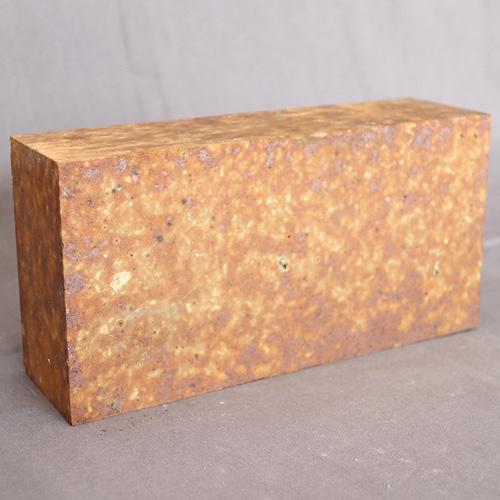
silicon mullite brick is a kind of refractory brick product made of super high alumina bauxite and silicon carbide as raw materials through a special sintering process. It has the characteristics of continuously forming a protective layer and reducing ring formation, and its heat resistance is also very good. The softening temperature under load can reach 1600 ℃, and the service life is long. Mainly used in the transition zone, decomposition zone and cooler of small and medium-sized cement kilns.
silicon mullite bricks for cement kiln
silicon mullite brick is a kind of refractory brick product made of super high alumina bauxite and silicon carbide as raw materials through a special sintering process. It has the characteristics of continuously forming a protective layer and reducing ring formation, and its heat resistance is also very good. The softening temperature under load can reach 1600 ℃, and the service life is long. Mainly used in the transition zone, decomposition zone and cooler of small and medium-sized cement kilns.
silicon mullite bricks are phosphate-bonded high-alumina bricks and phosphate-bonded high-alumina wear-resistant bricks, which are made of dense bauxite clinker as aggregate, phosphoric acid and phosphate as binders, and are produced by high pressure molding and medium temperature heat treatment. become. The thermal stability, wear resistance and chemical resistance of the product are excellent, but the high temperature performance is poor. It is widely used in the preheating zone of the rotary kiln, the decomposition zone and the kiln door cover, the inner lining of the cooler, etc. The ordinary high-alumina bricks were dipped in phosphate, and after being dried and taken out, it was found that the load softening temperature of the original high-alumina bricks increased. After phosphate impregnation, the porosity is significantly reduced, the bulk density is increased, and the flexural strength is significantly improved. Impregnating high-alumina bricks with phosphate can improve the quality of high-alumina bricks and prolong their service life.
|
index |
|
||
|
GMI1 650 |
GMI1 600 |
GMI1 550 |
|
|
Al2O3 % ≥ |
65 |
63 |
60 |
|
Bulk density (g/cm3)≥ |
2.65 |
2.60 |
2.55 |
|
Apparent porosity% ≤ |
17 |
17 |
19 |
|
Compressive strength/Mpa≥ |
85 |
90 |
90 |
|
softening temperature under load ≥ |
1650 |
1600 |
1550 |
|
Thermal shock stability (1100℃)/time≥ |
10 |
10 |
10 |
|
Abrasion resistance at room temperature/cm3≥ |
5 |
||
silicon mullite bricks features:
Good thermal shock stability
Does not break during use
Does not flake off
Corrosion resistant
The service life is significantly extended.
The compressive strength and load softening temperature of silica molybdenum bricks are significantly higher than those of anti-stripping high-alumina bricks, and their thermal shock stability, corrosion resistance and wear resistance are good, but their thermal conductivity is not high. It is exactly what is required by the process characteristics of the rear transition zone, and the service life is 1.5 to 2 times that of the anti-stripping brick. It has good wear resistance and is more suitable for cooling belts, and its service life can reach more than two years, which is 3 to 5 times that of high alumina bricks.
At present, according to the use conditions of different sections of the rotary kiln, silica mulberry bricks with different performances have been applied. In some large kilns with a daily output of 5,000 tons, refractory manufacturers have upgraded their products - silicon red bricks based on their experience to meet the needs of different kiln types.
Now, it can be said that silica molybdenum brick is the best choice for refractory material for the transition zone of cement rotary kiln.
The alkali-resistant brick for cement kiln has the characteristics of strong alkali erosion resistance, good thermal shock resistance and high cost performance.
Silica brick: an acidic refractory mainly composed of tridymite, cristobalite and a small amount of residual quartz and glass phases. Its silica content is more than 94%, it has anti-acid slag erosion performance, high high temperature strength, high load softening temperature, long-term use in high temperature flower wells without deformation, but low thermal shock stability (heat exchange in water is 1-4 Second-rate).
Corundum bricks are mainly used in iron-making blast furnaces and blast furnace hot blast furnaces, refining furnaces outside steel-making furnaces, sliding water heaters, glass melting furnaces and petrochemical industrial furnaces, etc.
Anhydrous tap hole mix for blast furnace tap hole
YY Refractory supplies premium-grade ramming material (ramming mass) for blast furnaces. Heat-resistant, erosion-proof, and easy to apply. Boost furnace longevity & efficiency. ISO-certified. Get a quote today!
The refractory pre -production is the category of irregular refractory materials, also known as the prefabricated block of the pouring materials, and the irregular refractory prefabricated block.
Insulating high alumina refractory bricks mainly refer to refractory products with an aluminum content of more than 48%. They are also called lightweight high-alumina bricks or heat-insulating high-alumina bricks due to their advantages of low bulk density, light weight, and good heat insulation effect. . It is a kind of thermal insulation refractory brick commonly used in high temperature industrial kilns and thermal equipment.
Common low-creep high-alumina bricks can be used in blast furnace hot blast stoves, as well as other industrial kilns, and can also be made into low-creep high-alumina bricks of different sizes according to specific construction requirements, such as lattice bricks, special-shaped bricks, anchor bricks, etc. , mainly used in industrial kilns in long-term high temperature environments



